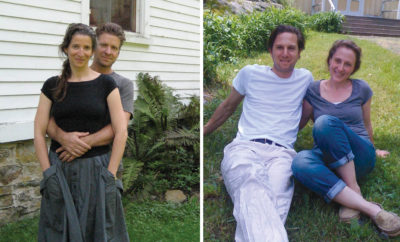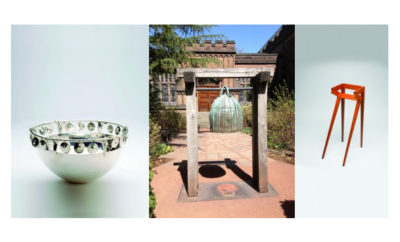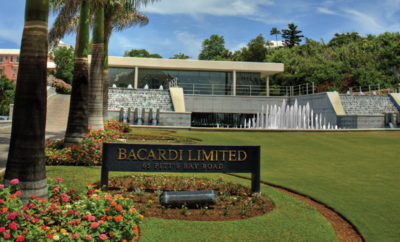 The Mint Museum Uptown building was designed by the Boston firm Machado and Silvetti and is part of a larger arts complex in Charlotte, North Carolina.
The Mint Museum Uptown building was designed by the Boston firm Machado and Silvetti and is part of a larger arts complex in Charlotte, North Carolina.
Feature
Crafting Collection
In Charlotte, the Mint Museum moves its Craft and Design division into the national limelight.
The striking concrete structure that is the Mint Museum Uptown is not only a cornerstone of Charlotte, North Carolina’s burgeoning arts scene, it is also home to “Craft and Design,” one of the country’s brightest new collections. Headed by Annie Carlano, Craft and Design is a division of the larger Mint Museum, which encompasses both the uptown museum and the original museum three miles away.
Carlano took the helm of Craft and Design in 2008, nearly ten years after its inception in 1999, and she is determined that it be among the most international, innovative, inspiring, and inclusive collections in the country. In addition to displaying a broad range of objects, from ceramics and glass (the Mint Museum Uptown has the best public collection of Czech glass in the U.S.) to textiles, jewelry, furniture, and more, she also seeks to introduce new artisans to the American consciousness with works that represent the first museum installation or commission for a variety of international designers and craftsmen, such as the desk and chair by Spanish-born designer Nacho Carbonell (Wood Branches Diversity n. 17) in the atrium. Yet there is a strong representation of North Carolina makers in the Craft and Design collection as well, such as the standout large vase by Donna Craven pictured on page 119.

Gift of Carol and Shelton Gorelick
The juncture of foreign and domestic, traditional and contemporary, form and function, object and culture, are all crucial to creating a collection as diverse as this one. “What’s so fascinating is that the world is so—and everybody says this, but it’s true—the world is so small that it’s hard to find any tradition that’s been able to remain pure because of cross-pollination of styles,” Carlano says. Thus Migration 9, a Navajo tapestry by New Mexican Ramona Sakiestewa that displays a mix of traditional weaving and contemporary elements, makes perfect sense in the same room as Urban Color Palette, the first American museum commission for Icelander Hildur Bjarnadóttir, which consists of squares of woven Icelandic wool dyed with plants found in the vicinity of the museum (dandelion leaves on one square, for example, clover on another).
Urban Color Palette came to the museum as part of Project Ten Ten Ten, an endeavor organized to celebrate the Mint Museum Uptown’s move to the present location (the name derives from the date of the move, October 2010). Project Ten Ten Ten consists of works commissioned from ten designers, each with an accompanying video that allows visitors to journey with the maker through the creation of his or her piece. Six of the ten have already been completed and installed in the museum. Among these, Danny Lane’s Threshold, a spectacular glass installation located in the entrance to the exhibition space, is best viewed in person—every pass by reveals different colors and patterns and a different experience. Other designers and artists invited to join the project include Ireland’s Joseph Walsh and Holland’s Ted Noten. The Project Ten Ten Ten works are among the collection’s most adventurous holdings and—along with the exhibition Against the Grain: Wood in Contemporary Art, Craft and Design (now on view at the Museum of Arts and Design in New York)—were on prominent view during last summer’s Democratic National Convention, which was held in Charlotte.
The Mint Uptown building itself was designed by the Boston firm of Machado and Silvetti and is part of a larger arts complex. Carlano acknowledges that “you get to design permanent galleries maybe once in a career,” and being able to do that when the museum moved was a great experience for her. In addition to providing twice as much space to display the permanent collections, which are arranged by medium, there is now space for storage, rooms for prep work, and room to allow for the growth and further development of the collection.
The largest work in the collection is Mega Footprint Near the Hutch (May I Have This Dance?) by American artist Sheila Hicks, which is on display in the lobby and seems to have been tailor-made for the space—though it wasn’t. Hicks’s largest work in an American museum, it celebrates, according to Carlano, “what dyed thread can do that paint on canvas can’t.” It also demonstrates the hybrid nature of the Craft and Design collection, displaying a respect for a traditional process (the wrapping technique) alongside contemporary art and design. Carlano’s commitment to excellence in all aspects of design is demonstrated in her decision to bring in outstanding graphic designer Irma Boom to design the book issued to celebrate Mega Footprint Near the Hutch.
The Craft and Design collection reflects the conscious decision to focus primarily on the twenty-first century. While there are older pieces in the collection (and the larger Mint Museum’s extensive holdings cover a much broader timeline), Carlano saw an opportunity to lead the field of contemporary design. She credits the Design Committee at the Mint Museum, local and national patronage for the collection, and her talented staff for the ability to bring so many diverse works together in one place. With such a collection of interests and specialties on board, “we are able to be more thoughtful, and go more deeply into topics, and to contribute more meaningful discourse, which is our goal, again, to be leaders,” she says.

Autarchy (2012) by Italian designers Andrea Trimarchi and Simone Farresin of FormaFantasma, Eindhoven, Netherlands, is made of flour (including Geechie Boy cornmeal), agricultural waste, vegetable dyes, beeswax, and pine tar. It is on view in the exhibition F.O.O.D. (Food, Objects, Objectives, Design) to July 7.
Another of Carlano’s goals is programmatic, bringing both great design minds and a wider variety of exhibitions to Charlotte, along with programs and conferences designed for both the design community and the general public. This is highlighted by the current F.O.O.D. (Food, Objects, Objectives, Design) exhibition, which showcases objects used both in the preparation and the presentation of food—plates and bowls, cutlery, baking and serving dishes, appliances, storage containers, and more. It runs through July 7, with a conference scheduled for April 26 with presentations by food writers, chefs, historians, and designers, such as food historian Darra Goldstein, designers Andrea Trimarchi and Simone Farresin of FormaFantasma, architect Ken Gaylord, and chef Peter Reinhart. Though fundamentally a design exhibition, F.O.O.D. aims to bring home both the personal and the universal nature of everyday objects, perfectly representing the intersection of form and function that so interests Carlano. She paraphrases William Morris, stating her view that all utilitarian objects should be useful as well as beautiful. In this way, designers and craftsmen make “a choice that improves your life, that enhances your life, in a very concrete way.”
Francesca Claybrook is a freelance writer living in Charlotte who enjoys design, fashion, the arts, and Italy.












